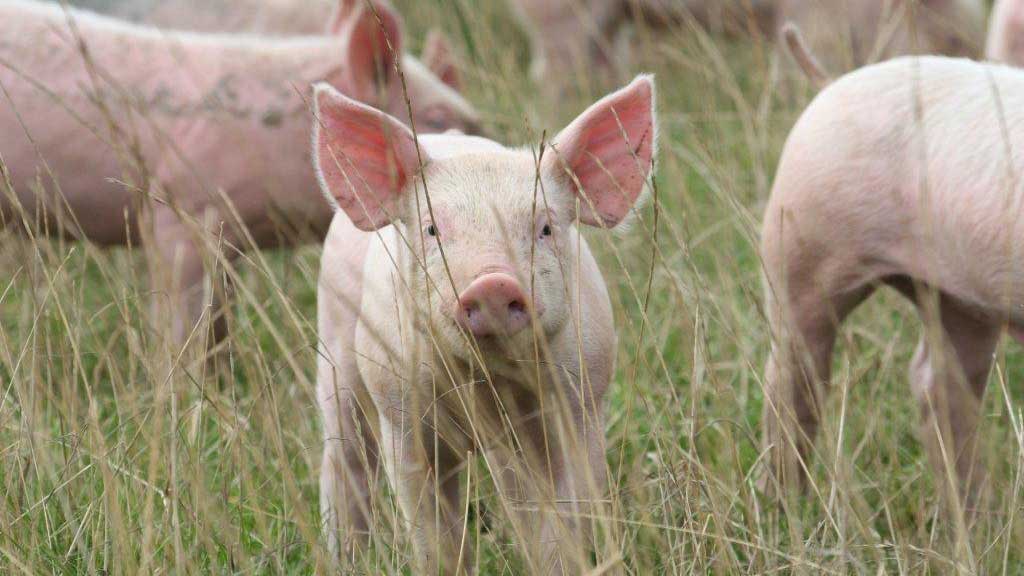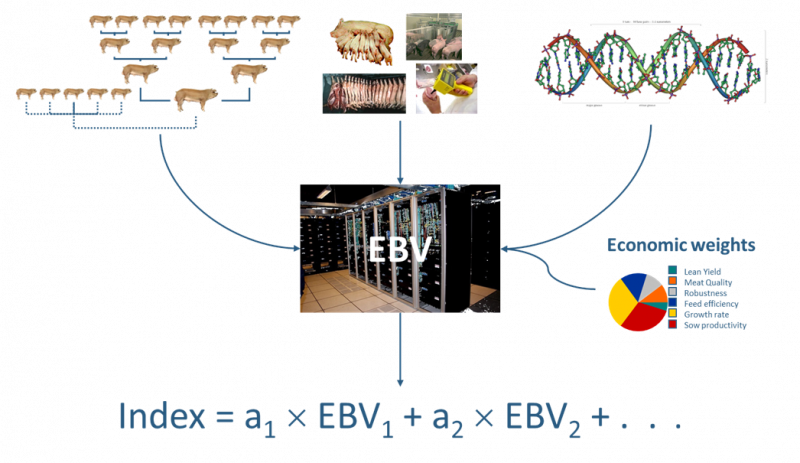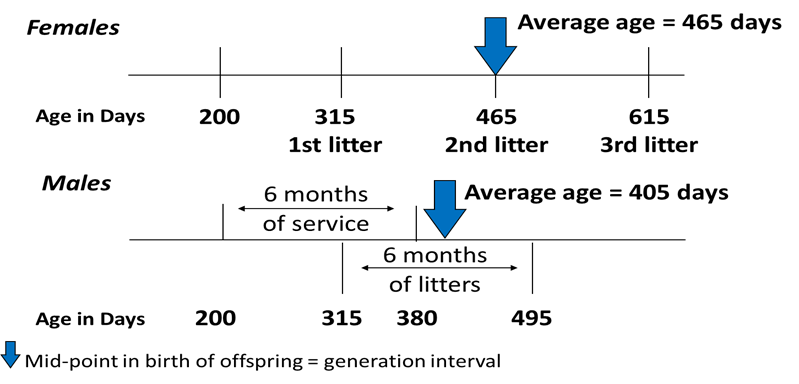
Module 2 – Genetic Improvement Part A
Thursday, 2 December 2021
A trait is any gene-determined attribute for an animal or plant with most traits often regulated by more than one gene.
In the second part of the Genetics Technical Module we’re focusing on the Key Points concerning Genetic Improvement; which are:
- Traits need to be heritable
- Variation is needed.
- Relatively short Generation Interval
- Breeding Program
- Measuring improvements
- Implementing genetic frontier technology
In this Pig Improver, we’ll be exploring the first three points.
Traits need to be heritable
A trait is any gene-determined attribute for an animal or plant with most traits often regulated by more than one gene. Trait heritability is a measure of how much of the variation in each trait within a population is caused by genetic variation. Heritability estimates range from zero to one, with an estimate close to zero indicating that most of the variability is due to environmental factors with little influence from genetic differences. There are many misconceptions about heritability and what it can and cannot tell us about a given trait, i.e.[1]:
- Knowing the heritability of a trait does not provide information about which genes or environmental influences are involved, or how important they are in determining the trait.
- Heritability does not give any information about how easy or difficult it is to change a trait.
Traits can vary greatly in their heritability, with reproductive traits having lower heritabilities to growth traits. Progress can’t occur if traits aren’t heritable. If they’re lowly heritable it can take a long time to see improvement with outdated selection methods.
When heritabilities are set, values for all traits are collated and become a pig’s genetic merit. A combination of genetic calculations on the data available at that point in time are used to work out an animal’s Estimated Breeding Values (EBVs). It’s important to remember that a specific animal’s EBVs are not set in stone and will change over time as more information on relatives becomes available.
You also need to have multiple traits included in the design of a breeding program, as production and profitability have many influences. Single trait selection is just bad business as most traits are influenced by many genes; to select traits
in isolation will set up weak points in the production chain. But considering multiple traits is not that straightforward as:
- Most of their measurement units are different;
- They may differ in their economic importance, and
- They will have different heritabilities.
This issue is solved by using selection indexes which assign a weighting or value to each trait. When these are combined, they provide a single value which is used to compare different boars, sows and gilts within different breeding Lines (Figure 2).

Variations Needed
A breeding stock supplier MUST have sufficient number of stabilized pure lines AND sufficient herd size within these lines to meet current and future market demands. Effective Selection Intensity is ONLY possible with large groups. Selection Intensity basically means the amount of selection pressure that a breeder can apply on a particular line.
Selection intensity for a performance trait depends the how many animals are tested as well how many replacements you’ll select. For example, consider two stud breeders; both need to select 4 boars from a line to place into a Boar stud; Breeder A has 10 boars to choose from and Breeder B has 120 to choose from. Which Breeder would be able to use the greatest selection intensity? Breeder B as they have a larger population to draw from; they can step up the selection intensity to a greater level. The greater the selection intensity, the greater the amount of genetic improvement that can occur, which is only possible with large herd numbers for individual lines.
PIC maintains Selection Intensity in its Genetic Nucleus by:
- Maintaining large populations
- Testing every animal in the Genetic Nucleus
- Selecting breeding animals using EBVs based on phenotypic performance and Relationship Based Genomic Selection (RBGS) i.e. Genomics
After Selection Intensity, the other factor which has the greatest influence on Genetic Change is the Generation Interval.
Generation Interval
Both Selection Intensity and Generation Interval can vary and as such they drive Genetic Change i.e.

What exactly is the Generation Interval? The Generation Interval is simply the average age of the parents when the progeny are born. If a nucleus herd keeps boars and sows for a long period of time, there is a long generation interval and genetic improvement is slowed. For example, for a relatively short generation interval of 435 days, sows would be removed from the nucleus after the birth of the second litter, and boars would be culled after 6 months of service (Figure 3).
But if the breeders are removed at an older age, the Generation Age is drawn-out, which means the herd is turned over at a reduced rate, slowing genetic progress. PIC maintains a good generation interval by limiting the number of services for boars and limiting the number of litters for sows.

In the next edition of the Australian Pig Improver, we’ll look at the final three key points in Genetic Improvement.
The opinions, advice and information contained in this publication are offered by PIC Australia soley for informational purposes and it does not constitute professional, commercial or technical advice. While information contained in this publication has been formulated in good faith, the contents do not take account all the factors which need to be considered before putting the information into practice. Accordingly, no person should rely on anything contained herein as a substitute for specific advice.

